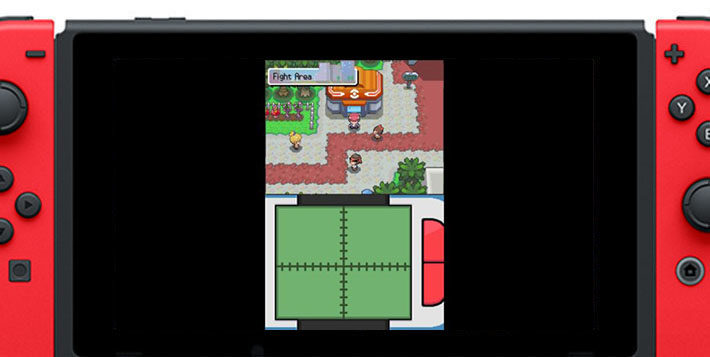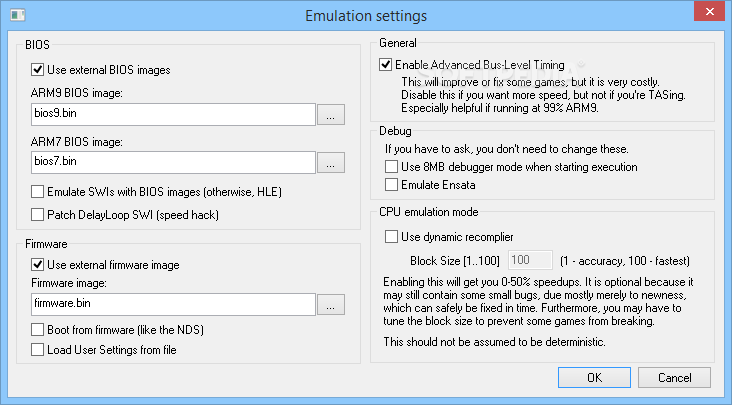Bios7.bin Bios9.bin Firmware.bin Download Knight Muzzleloader Toby Bridges Download Corel Draw X7 Gigapurbalingga Digital Synth With Analog Oscillator Filmora Free Crack Download Apex Legends Aimassist Hdmi Cable Length Limit 4k Weatherby Vanguard Series 2 Proficy Machine Edition Key Code Bel Canto Design E-one S300.
- Bios7.bin Bios9.bin Firmware.bin Download Angel Sound Ltd Las Vegas Nv Can A Nys Drivers License Be Renewed Online? Written Report Sample Live Desktop Scorecard Download Force Update Of Onedrive Rm 837 Flash File Zoombrowser Ex Ver.6.6 Yandere Simulator Mod Download Lagu Boom Boom Pow.
- Upon the first run, the emulator will prompt you to select the folder with the BIOS and firmware files, specifically, Bios7.bin, Bios9.bin, and firmware.bin. Choose the directory that you extracted the contents to (in step 2). Next the emulator will prompt you to select the NDS games folder, pick the directory where your games are located.
- 첨부한 NDSBiosFirmware.rar 압축해제 후 bios7.bin / bios9.bin 이름 변경후 firmware.bin 파일과 같이 SD 카드 - melonDS 폴더를 만들어서 넣어줍니다 3. Melonds-0.8.3.zip 압축해제 후 romlist.bin 파일를 SD 카드 - melonDS 폴더에 넣어줍니다.
- . bios7.bin - ARM7 BIOS, 16KB. bios9.bin - ARM9 BIOS, 4KB. firmware.bin - firmware, 256KB or 512KB. Note: the DS-mode firmware in the 3DS isn't bootable. It only contains the bare minimum required to run DS games. Be sure to enable direct game boot when using a.
First of all, melonDS requires BIOS and firmware dumps from a DS or if you want to emulate the DSi, melonDS requires the BIOS, firmware and NAND image. We haven't gotten around to making alternate BIOS/firmware yet. So, you will need to obtain those:
DS Emulation
- bios9.bin - 4KB - ARM9 BIOS
- bios7.bin - 16KB - ARM7 BIOS
- firmware.bin - 128/256/512KB - firmware dump
You can then configure the BIOS and Firmware by going to Emu Settings -> DS-mode and then navigate to the paths of each file.
You can dump these files from a DS/DSi/3DS with this dumper by running it on a flashcart on a DS, (R4, Acekard, etc) or through nds-bootstrap or similar on a DSi/3DS.
The firmware can come in three flavors:
- DSi/3DS DS-mode firmware: 128KB
- regular DS firmware: 256KB
- iQue DS firmware: 512KB
DSi/3DS DS-mode firmwares are not bootable. They only contain configuration data.
DSi Emulation
As of melonDS 0.9, melonDS can also emulate the DSi. To get the DSi BIOS, firmware and NAND image, you need these files:
- DSi ARM9 BIOS: 64KB
- DSi ARM7 BIOS: 64KB
- DSi Firmware: 128KB
- DSi NAND image: ~240MB
To obtain the DSi BIOS and firmware, you can use this dumper and to dump the DSi NAND (must include the nocash footer), you can use dumpTool.
Bios7.bin Bios9.bin Firmware.bin
Once that is done, you can launch melonDS and set it up.
Emu settings
- Boot game directly: when loading a ROM, this will run the ROM directly instead of running the 'Nintendo DS' boot screen.Note that if your firmware comes from a DSi or 3DS, you should keep this enabled.

Input config
This is where you map keyboard and joystick input. To map a button, click it, then press the desired key or joystick button. You can press Escape to cancel the mapping process, leaving the previous mapping unchanged. Joystick mappings can also be cleared by pressing Backspace.
As of 0.8.1, it is possible to map keys with modifiers (Ctrl+Z, Shift+Q, Ctrl+Alt+K...). Key mappings can also be cleared by pressing Backspace, just like for joystick mappings. And joystick mappings can have both a button/hat direction and axis assigned; mapping one type will leave the other mapping type intact (for example mapping a button leaves the axis mapping intact). Pressing Backspace clears both mappings.
Hotkey config
This functions the same as input config, but pertains to hotkeys, which are like special buttons controlling the emulator's features (for example, fullscreen, closing the lid, playing a microphone sample, ...).
Video settings
Display settings
- 3D renderer: chooses which renderer to use to render the DS's 3D graphics. The software renderer is the most accurate, but also the most intensive on your CPU. The OpenGL renderer will use your GPU, making it potentially faster but also less accurate. The OpenGL renderer is also capable of rendering at higher internal resolutions, allowing for better quality of 3D graphics.
- OpenGL display: uses OpenGL instead of Qt to draw the DS screens to the window. This is forcefully enabled when using the OpenGL renderer as they work faster together.
Software renderer
- Threaded: runs the rasterizer on a separate thread for better performance on multicore CPUs. (in 0.7.3 and older this setting is found in the emulation settings dialog)
OpenGL renderer
- Internal resolution: the resolution at which the renderer will render graphics. Higher resolutions yield smoother graphics but may require more GPU power and may cause visual issues in certain games. Note that changing this setting only changes the internal resolution for 3D graphics and does not affect the window size.
Audio settings
Audio output
- Volume: sets the general volume for the emulated audio output.
Microphone input

- None: no microphone input.
- Microphone: uses input from the microphone connected to your PC, if any.
- White noise: feeds random noise as microphone input, which is enough for a lot of games. Controlled by the microphone hotkey.
- WAV file: feeds a small WAV file as microphone input. Controlled by the microphone hotkey.
Wifi settings
Local
- Bind socket to any address: enables local multiplayer over LAN. Toggling this may also help getting local multiplayer to work even on the same machine.
Online
- Direct mode: directly forwards network traffic to the host network by using libpcap.
- Network adapter: under direct mode, chooses which adapter to forward to.
Savestate settings
- Separate savefiles: when enabled, loading/saving states will redirect regular saves to a separate file, as to keep your original save file intact.
Display settings
Phoenix Award Bios Update
- Screen size: sets the window size to an integer size (1x, 2x, 3x, 4x).
- Screen rotation: rotates the screens, to simulate holding your DS sideways.
- Mid-screen gap: the space between the screens.
- Screen layout: how the screens are laid out; Natural keeps them stacked like an actual DS, the other options keep them aligned horizontally or vertically regardless of rotation.
- Screen sizing: how the window space is distributed; you can choose to keep the screens at the same size or to emphasize one, keeping the other at native resolution. Auto tries to determine the ideal mode based on how the game configures the display.
- Screen filtering: when enlarging the screens, applies a bilinear filter.
- Limit framerate: limits the emulator's framerate, typically at 60FPS.
Once melonDS is set up to your liking, well, load a game and enjoy!
HD Erick Games- ID: 57686
- +2
Someone who speaks Portuguese
Karma: 484
Posts: 66/166
Since: 11-02-16
I made this thread for people that doesn't know the existence of this Emulator, this emulator is in Alpha stage but alredy supports local multiplayer on Pictochat, NSMB and Pokémon. this can be useful to Test Mario vs Luigi hacks if you don't have a DS/3DS and/or to record and take high quality screenshots without the need of a Capture Card. Sadly melonDS doesnt support Local Multiplayer between real DS's but at least melonDS achieved what every other DS emulator didn't. Local Multiplayer Emulation.
Download link for melonDS emulator: Here
Download link for DS bios7.bin, bios9.bin and firmware.bin: (removed)
(Remember to rename the files to the names i listed above or it won't work)